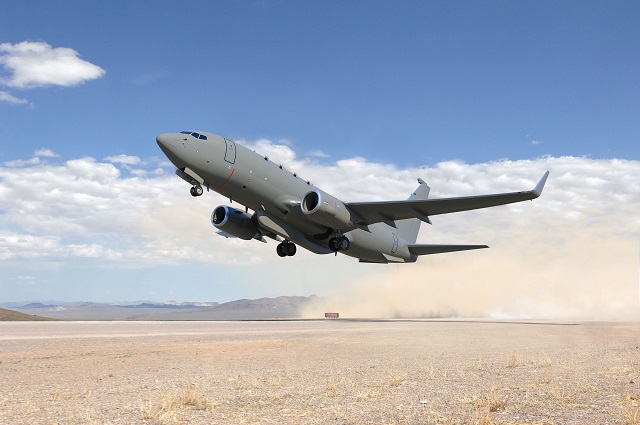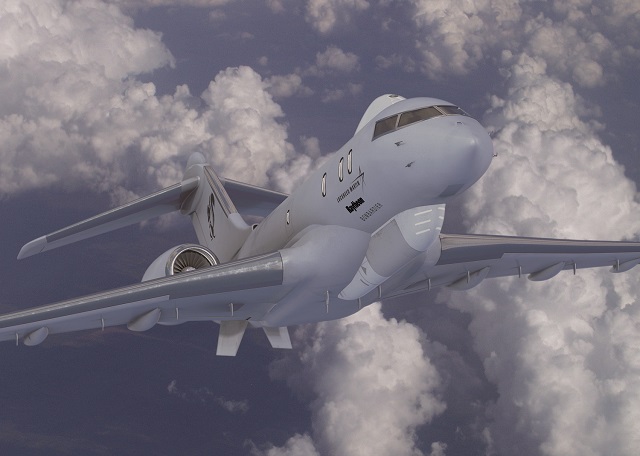The US Air Force has locked in Raytheon and Northrop Grumman as its two competing radar vendors for the new-generation Joint Surveillance and Target Attack Radar System (JSTARS) programme. Each has been awarded “not-to-exceed” contracts with ceiling values of $60 million and $70 million, respectively, according to a contract announcement by the air branch on 24 March.
The two companies have received $7.5 million each to begin maturing their competing long-range, wide-area surveillance radars systems ahead of a downselect to one supplier in late 2017 or early 2018.
The winning side will build 17 units, to be attached to 17 yet-to-be-determined business jets built by one of three competing suppliers – Gulfstream, Bombardier or Boeing.
Service officials have cited radar integration as one area of risk that could potentially delay the introduction of the new JSTARS platform, which replaces 16 Northrop Grumman E-8Cs, which are based on second-hand vintage Boeing 707-300-series commercial airframes that have been in service since Operation Desert Storm in 1991.

Boeing is offering a modified 737-700 BBJ
Boeing
According to the air force, the wide-looking radar must be able to detect and track “vehicles, slow-moving rotary and fixed wing aircraft, rotating antennas, jammers" as well as other dismount and stationary targets on land and at sea. Its synthetic aperture radar mode will be used for target location/tracking and terrain imaging.
Raytheon is proposing its "Skynet" radar, which is derived from the US Navy's APS-154 Advanced Airborne Sensor that was developed for the Boeing P-8A Poseidon. It was a follow-on programme from the Rayton littoral surveillance radar system, a synthetic aperture and ground moving target indicating sensor, fitted on tne navy's Lockheed P-3C Orion fleet.
Less is known about Northrop's offering, but it probably has roots in the ZPY-2 multi-platform radar on the Block 40 RQ-4 Global Hawk, which was developed in partnership with Raytheon. Both companies also teamed up to produce a larger version of the RQ-4 radar, which was destined for the ill-fated Northrop E-10A programme, the original JSTARS replacement concept cancelled nearly a decade ago.
The winning radar will replace the 7.3m APY-7 side-looking phased array antenna mounted on today's E-8C.
Competing prime contractors Northrop Grumman, Lockheed Martin and Boeing were awarded similar “risk-reduction” contracts last August, and those were extended in January so that competing concepts can be matured ahead of a source-selection decision in the “first quarter of fiscal 2018” for the development phase.
The new JSTARS fleet is expected to deploy worldwide for day and night operations in all weather conditions, providing battlefield surveillance and coordination via onboard battle management consoles manned by technical specialists, according to air force documents.

Lockheed Martin Skunk Works is working on an JSTARS system based on a Bombardier Global series aircraft. Northrop Grumman is teamed with Gulfstream for the 550 or 650.
Lockheed Martin
The programme has moved forward too slowly for some, and the date for full operational capability with 16 operational aircraft and one test asset has been pushed back from fiscal years 2026 to 2028 in the service’s latest budget request, which seeks a total of $3.2 billion in research and development funding.
A placeholder initial operational capability (IOC) date with four aircraft has been pushed back time and again, and is now planned for fiscal 2024, according to USAF chief of staff Gen Mark Welsh, who wants to “accelerate” the programme if at all possible.
US Defense Secretary Ashton Carter this month urged Congress to support the JSTARS recapitalisation effort to ensure it “remains on time and on budget” since the legacy E-8Cs are aging out.
Source: FlightGlobal.com



















